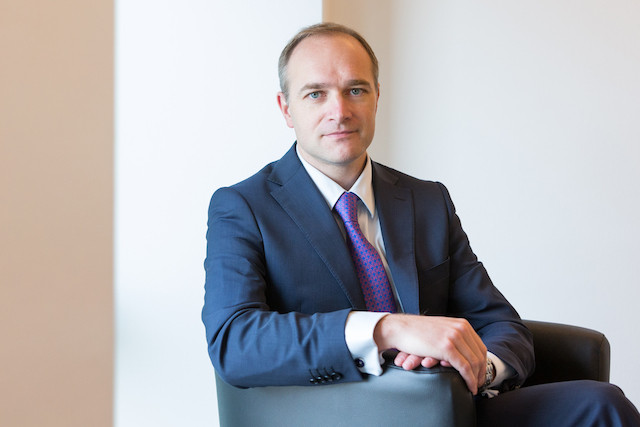We know Luxembourg’s alternative fund sector is growing strongly, but putting figures to this is difficult. The traditional methods of quoting the volume of net assets is tough. How much is a private equity investment worth when the company is not quoted on a stock exchange? What is the value of an apartment block, an office complex or student accommodation held by a real estate investment fund?
At the end of June 2018, there were €695bn of assets under management in Luxembourg alternative investment funds (AIFs), according to the European trade association Efama. However, this figure is based on the types of fund vehicle used, and many of these funds also have investments in traditional public assets. Nevertheless, this figure gives an idea of the direction of travel, with average annual growth from 2014-2017 of 9.3%. In the year to date, net assets rose 3.3%.
Evidence of growth
Looking at the different asset classes gives another impression. Over the 2015-2017 period, figures by the CSSF regulatory agency point to assets under management in the real estate sector growing on average by 19.5% per annum, with the figure set to exceed this in 2018. Total assets for Luxembourg real estate funds were €69.2bn at the end of August 2018. However, putting a figure on the size of Luxembourg’s private equity fund sector has proved elusive as these assets are difficult to value.
Comparison with other countries is also problematic. Luxembourg is fourth in Europe in terms of assets in the Efama figures, behind Germany, France and the Netherlands, and just ahead of its main cross-border competitor Ireland. However, as regards the number of AIFs based here (4,581 in June), the grand duchy is ranked second highest in Europe, behind France, and with about 40% more funds than Ireland.
Sometimes, it is the more anecdotal evidence that is the most telling. For example, Luxembourg has welcomed around seven new international legal practices in the last two years. Helping firms with their alternative fund strategies are a significant part of why they came.
Strong fundamentals
This growth is thanks mainly to booming alternatives markets globally and in Europe. For example, the analysts Preqin point to venture capital fundraising in Europe reaching €15bn in 2016 and €12bn in 2017. The first seven months of 2018 saw funds targeting the region secure over €11bn from investors, already more than any year in the 2008-2015 period. Efama figures for AIFs in Europe totalled more than €6trn in July 2018: more than three times the figure seen for 2007. More growth is in the pipeline. A recent survey by State Street of 250 global asset managers suggested that 83% plan to offer real estate funds and private equity funds, up 13% and 24% in a year.
Brexit is also having an effect, and there could be more to come. “Some of the larger players that set up new PE vehicles and raise funds every second or third year have had to move in order to ensure continuity for investors,” said Alain Kinsch, country managing partner of the consultancy EY in Luxembourg and EMEIA private equity fund leader. “However, other PE houses, especially smaller ones, still have time as they go to market every four to five years.” These funds only need licences to operate in the EU at the time of fundraising.
Substance magnifier
The impact on Luxembourg of these growth fundamentals is magnified by international rules designed to reduce tax evasion. This has affected all international businesses with a base in Luxembourg, as well as funds. Firms have been following the OECD’s base erosion and profit shifting rules for a while, and these requirements are being put into law through the EU’s Anti Tax Avoidance Directive. This will enter fully into force in Luxembourg from 2020, with some provisions applicable from next year.
Most players have responded by increasing back office, middle office and decision-making presence in this country. However, some players are using this to make a fundamental strategic reassessment, with them seeking to rationalise their pan-European operations, including moving substantial front office capability to Luxembourg. For example, the Swedish private equity group EQT relocated a wide range of its operating platform functions to the grand duchy last year.
Nowhere else
Players are coming here because nowhere else offers such expertise into how to structure funds that involve many jurisdictions. “From the property asset on the ground, through to the property company, then the intermediate holding company, and then to the Luxembourg fund, this will involve at least three jurisdictions,” said Laurent Fessmann, the managing partner of the Luxembourg office of the international law firm Baker McKenzie, describing a common structure in the real estate space.
More countries make for more complexity, and then there can be links to feeder funds channelling capital from outside the EU. Operating these structures requires sufficiently flexible investment vehicles and detailed knowledge of the regulatory environment in each jurisdiction.
Luxembourg already had an attractive regulatory environment, and this was reformed in recent years to match the requirements of global alternative fund players. These changes have now bedded down and have become well-known within the industry. The SCSp partnership regime matches strategies seen in the Anglo world, and the Raif enables managers to react quickly to events in the life alternative funds; strategies that require flexibility.
This, plus a booming global market, is partly why Luxembourg’s economy and property prices are booming, and why the roads are that little bit more congested these days.
